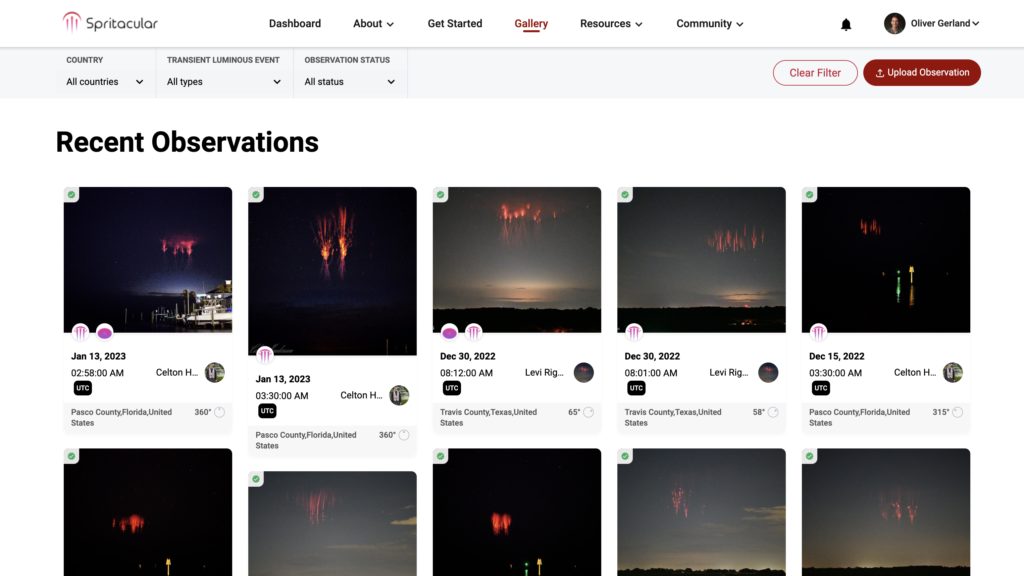Home > Developing the Spritacular Citizen Science Application
Developing the Spritacular Citizen Science Application
CLIENT
NASA & Catholic University of America
INDUSTRY
- Space
01
CASE
Building a custom citizen science web application to crowdsource citizen science observations of Transient Luminous Events (TLEs) and Sprites.
02
Overview
Spritacular is a community science project that aims to collect observations of sprites and other optical phenomena occurring above the thunderstorms – collectively known as Transient Luminous Events (TLEs). The database generated from these observations will lay the groundwork for the first-ever event catalog of TLEs that will greatly contribute to the advancement of scientific studies.
03
OUR
Approach
Since October 2021, Ensemble has been supporting the development and hosting of a citizen science application for storm chasers and space weather scientists on behalf of the Catholic University of America and supported by the NASA Goddard Space Flight Center. The ‘Spritacular’ platform aims to serve as a central hub for users to upload images of sprites, which are lightning-like large-scale electric discharges that produce vivid celestial sights that have captured the interest of thousands of citizen scientists who enjoy chasing these phenomena and capturing images of them to share amongst the community.
The Spritacular application enables users to explore a gallery of sprite data and imagery, engage with other citizen scientists, and empower novel scientific discovery. The web-based application launched in Summer 2022.
The core features of the application include:
- Custom User Registration and Login Management
- Scientific Observation Upload Form
- Observation Gallery
- Unique Image Detail Pages with User Comments / Engagements
- User Tutorial
- Dynamic Observation / Training Quiz
- Blog page
- About Us page
- Admin Dashboard with analysis, approval querying and export capabilities
05
Results
Since launching the application, Spritacular has been used by avid sprite chasers around the world and has been featured on NASA.gov, Interesting Engineering, Futurism, and the New York Post.


